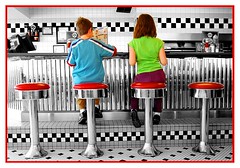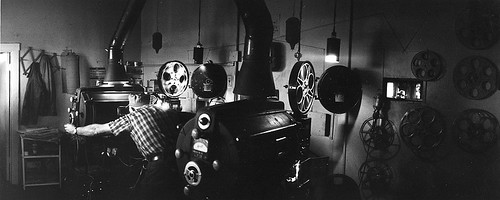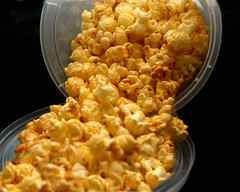
How often do you go out to eat? Statistically, you probably eat out four or more times per week. Do you know how many calories are in the food you eat at a restaurant? Most likely you don't. That is unless it comes off of the "eating light" section of the menu. Did you know that a chicken Caesar salad at the Macaroni Grill has more fat than a barbecue chicken pizza? Neither did 90 percent of people questioned in a Field Poll survey conducted in March 2007.
According to the Field Poll, Californians have no idea what they are eating when they go to a restaurant. The telephone survey asked four multiple choice questions regarding fat, salt, and calorie content of food items on the menu at certain chain restaurants. Not on single person answered all four of them correctly.
Lack of knowledge of the content of food is a huge factor in obesity. While it is important to recognize that proper diet and exercise is the weapon to combat obesity, it should also be noted that restaurants in general, and fast food specifically have a obligation to communities to give them tools that will help them make informed decision about what they eat.

California is fast becoming an obese society and a major part of the problem is the convenience of eating out. As time goes on, we see more convenient food being packaged for our consumption. With a growing amount of the population existing in two-income families, there is less time to cook from scratch with fresh ingredients. Going out to eat has become the easiest, and sometimes fastest way to get dinner for the family. If parents were given the nutritional value of the food they ordered, they might make different choices on what to feed their children. Most people read the label at the grocery store in order to check the health factor of their food. In 1990, the Nutrition Labeling and Education Act was passed, requiring nutrition labels on food. People have gotten so used the reading labels that it is hard to remember a time when you didn't know how many servings were in a family-size bag of potato chips. Since then, the public has become significantly more aware of ingredients that are bad for you. For instance, trans fat, or partially hydrogenated soybean oil. Why shouldn't we have the right to nutritional labeling at restaurants as well?
The American Heart Association has teamed up with the California Center for Public Health Advocacy as well as the American Cancer society to sponsor a bill that would make it mandatory for restaurants to post nutrition information on their menus. Senate Bill 120 has been passed by the Legislature and is headed to the Governor's desk for approval.
The California Restaurant Association is not happy about the bill's passing. President and CEO, Jot Condie says that having nutrition labels on menus will not have any affect on obesity rates. When you read the Field Poll statistics and see how many people are not just uninformed, but misinformed about food content in restaurants, it seems hard to believe that the restaurant industry has nothing to do with obesity.

This new bill would only effect chain restaurants that have more than 14 locations in California, so the burden of cost is nothing compared to the affect of the future health of our children and ourselves. In fact, cost is the only thing that the California Restaurant Association is complaining about. Of course, they are not going to admit to their concerns that if Californians saw how unhealthy their meal was, they would start to demand better alternatives. Just like they did with grocery store labels.
Senate Bill 120 is nothing but good news for Californians by allowing them to make better informed decisions on what they eat at a restaurants, and nothing but bad news for the multi-billion dollar mega corporations, by forcing them to make new menus. Does anyone have a problem with that?





